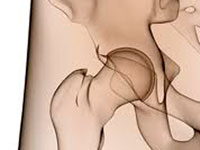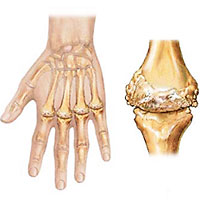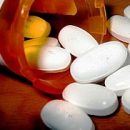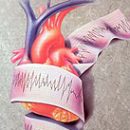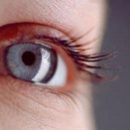Rheumatism is inflammation of the connective tissue with the predominant localization of the process in the cardiovascular system.
Content
The development of rheumatism is closely related to the preceding acute or
Chronic nasooping infection caused by streptococcus.
An important role is removed by genetic factors, which is confirmed
more frequent morbidity of children from families in which someone from
Parents suffer from rheumatism.
In the development of rheumatism
Important value has a direct or indirect damaging
The effects of streptococcal components, its toxins on the body with
development of immune inflammation. For selective damage valves
Hearts and myocardium with the development of immune aseptic inflammation
Responsible antiordinate antibodies, cross-reacting with
Heart fabrics (molecular disguise).
Manifestation of rheumatism
Rheumatism
characterized by the manifestation of manifestations and variability of flow. How
Rule, he arises at school age, less often at preschoolers and
Practically does not occur in children under 3 years.
In typical
Cases The first signs of rheumatism are detected after 2–3 weeks after
Angina, pharyngitis in the form of fever, signs of intoxication
(fatigue, weakness, headache), pain in the joints and others
manifestations of the disease.
One of the earliest signs
rheumatism are pain in the joints detected in 60–100% diseased.
Rheumatic arthritis is characteristic of the sharp start, the involvement of large
or medium joints (more often knee, ankle, elbow), fast
Reverse development of the process.
Signs of heart lesions
Defined in 70–85% of cases. Cardiac complaints (pain in
hearts, heartbeat, shortness of breath) are marked with pronounced
Cardiac disorders. More often, especially at the beginning of the disease, are observed
A variety of asthenic manifestations (lethargy, malaise, increased
fatigue).
More rare symptoms of rheumatism include annular rash and rheumatic nodules.
Annular
rash (ring-shaped erythema) – Pale pink inappropriate rash
thin ring-shaped rim, not towering over the surface of the skin and
disappearing at pressing. Detected in 7–10% of patients with
rheumatism, mainly at the height of the disease and usually wears
Unstable character.
Subcutaneous rheumatic nodules – Rounded,
dense, sedentary, painless, single or multiple
Localization in large and medium-sized joints,
Ostial vertebral processes in tendons. Currently
are rare, mainly with severe form of rheumatism,
Save from a few days to 1–2 months.
Stomach ache,
defeat lungs, kidneys, liver and other organs during rheumatism in
Currently meets extremely rare, mainly in serious
flow.
Diagnosis of rheumatism
- ECG is often detected by rhythm disorders.
-
Radiologically, in addition to the not always pronounced increase in the heart
Signs of reducing the contractile function of myocardium are determined,
Changing the configuration of the heart. - Ultrasound of the heart.
- Laboratory indicators.
Treatment of rheumatism
Treatment
rheumatism is based on the early appointment of integrated therapy,
aimed at suppressing streptococcal infection and activity
inflammatory process, warning development or progression
Pulk heart. The implementation of these programs is carried out on the principle
Stages: 1st stage – Stationary treatment, 2nd stage – Foundation B
Local Cardio Rheumatology Sanatorium, 3rd Stage – dispensary
Observation in the clinic.
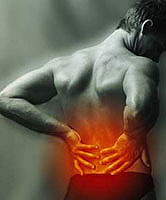
In the 1st stage in the hospital patient
prescribe medicinal treatment, nutrition correction and medical
Physical culture that are determined individually taking into account features
Diseases and, above all, the severity of heart lesions. In connection with S
Streptococcal nature of rheumatism Treatment is carried out by Penicillin.
Antipersic therapy provides one of Nesteroid
anti-inflammatory drugs that are prescribed isolated
or in the complex with hormones depending on the testimony.
Antimicrobial
Penicilline therapy is carried out within 10–14 days. In the presence of
chronic tonsillitis, frequent exacerbations of focal infection
Penicillin treatment duration increase, or additionally
Use another antibiotic – Amoxicillin, macrolides (azithromycin,
Roxitromycin, Clarithromycin), Cefuroxime Axietyl, other cephalosporins
In the age dosage.
Nesteroid
Anti-inflammatory drugs apply at least 1–1.5 months
before eliminating the signs of the activity of the process. Prednisolone in the initial
Dose are prescribed for 10–14 days before the effect is obtained, then
Daily dose reduce 2.5 mg every 5–7 days under control
Clinical and laboratory indicators, subsequently, cancel.
Duration
treatment with quinoline drugs during rheumatism is from
several months to 1–2 years and more depending on the flow
Diseases.
In the hospital's conditions, elimination
Chronic foci of infection, in particular, removal of almonds,
carried out by 2–2.5 months from the beginning of the disease in the absence of
Signs of process activity.
Main task in the second stage
is the achievement of complete remission and restore functional
Cardiovascular ability. In the sanatorium continue to be launched
In hospital, therapy is treated with chronic infection, exercise
The corresponding medical and wellness regime with differentiated
Motor activity, healing physical education tempering
Procedures.
The third stage of the complex therapy of rheumatism
Provides for the prevention of relapses and progression. To this end
Use the preparations of penicillin extended action, mainly
Bicyllin-5, the first introduction of which is carried out in the period
inpatient treatment, and later – 1 time in 2–4 weeks
year-round. Regularly, 2 times a year, there is an outpatient
survey comprising laboratory and instrumental methods;
prescribe the necessary wellness events, therapeutic
Physical culture. Children who suffered a rheumorite, in the presence of a valve
Pulk hearts Bicyllinoprophylaxis is carried out until reaching the age of 21
Year or more. With rheumatism without the involvement of the heart Bicyllinoprophylaxis
spend within 5 years after the last attack. In spring autumn
The period along with the introduction of Bicillin shows a monthly course of nonsteroidal
Anti-inflammatory drugs.
Prevention of rheumatism
The prevention of rheumatism is divided into primary and secondary.
Primary prophylaxis is aimed at preventing rheumatism and includes:
- Improving immunity (hardening, alternation of load and leisure, full nutrition, etc.).
- Identification and treatment of acute and chronic streptococcal infection.
- Preventive measures for rheumatism predisposed
children: from families in which there are cases of rheumatism or other
rheumatic diseases; often sick nasophal infection;
having chronic tonsillitis or weathered sharp streptococcal
infection.
Secondary prophylaxis aims to warn
recurrences and progression of the disease in patients with rheumatism in
Conditions of dispensary observation.
Forecast with rheumatism
Hearts ends with recovery. Formation of valve defects
hearts, more often with the development of mitral insufficiency, is determined in
fifteen–18% of cases at the first attack, mainly with severe, protracted
or latent the course of the disease.



